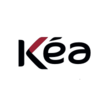Detailed content of our market study
 Inforamtion
Inforamtion
- Number of pages : 35 pages
- Format : Digital and PDF versions
- Last update :
 Summary and extracts
Summary and extracts
1 Market Summary
1.1 Definition and presentation
The foodservice market encompasses a broad spectrum of activities ranging from preparation to serving food and beverages, divided into several key segments: traditional catering, such as restaurants, trattorias and taverns that enhance local culinary traditions; commercial catering, which includes fast food, pizzerias and international chains; mass catering, focused on school, company and hospital canteens; and innovative solutions such as dark kitchens, food trucks and pop-up restaurants, which represent the new frontier of the dining experience, meeting the needs of an increasingly diverse public. Alongside these, we find fast food catering, designed for the hectic pace of urban areas, and hotel catering, which combines gastronomic luxury with the tourist experience, often enhancing local products.
Globally, the restaurant market is growing strongly, from 478.7 billion in 2023 to 635.5 billion in 2032, an increase of 32.7 percent. This trend is supported by growing demand for unique dining experiences, the spread of food delivery, and the push toward sustainable models. In Europe, the sector is characterized by a strong fragmented identity, with the predominance of small and medium-sized companies rooted in the local area. However, technological innovation, the adoption of sustainable practices and the growing role of delivery are redefining the competitive landscape on the continent as well. The European market will grow 14.2 percent by 2031, reaching 161 billion euros.
In Italy, the restaurant market shows steady, if moderate, growth, rising from 92 billion euros in 2023 to 104.95 billion in 2030 (+14%). After the drastic decline in 2020 (-36.2%) caused by the pandemic, the sector has experienced a significant recovery since 2021, with a 40% increase bringing revenue levels back above pre-pandemic levels. In 2023, the number of active businesses was 71,290, still heavily dominated by sole proprietors (136,868 businesses), followed by limited liability companies (68,076). However, the sector is facing structural difficulties: in 2023, the balance between openings and closures was negative (-17,693 businesses), with the rate of terminations three times as high as new registrations. On the demand side, Italian consumers show a growing interest in sustainable and innovative models. In 2023, 40 percent of out-of-home visits are attributed to the 35-54 age group, which prefers occasions related to work and evening leisure, while the 16-24 year-old segment has reduced the frequency of evening visits by 6 percent compared to the previous year. Geographically, the Northwest has the highest average monthly spending on dining services (172.5 euros), while the South and Islands are at much lower levels (73.8 and 83.7 euros, respectively). Online interest in dining is mainly concentrated in northern regions, with Trentino-South Tyrol registering the highest search index (Google Trend Index: 100).
In terms of supply trends, the industry is diversifying with the introduction of plant-based menus, zero waste options and dark kitchens for delivery. Thematic restaurants, multi-sensory dining experiences, and integrated technology (such as QR codes for menus and contactless payments) are rapidly gaining ground. The consumer price index for food services rose 20.5 percent between 2018 and 2024, reflecting inflationary pressures in the sector. However, this increase was not matched by adequate profit margins: commercial profitability (ROS) declined from 6 percent in 2018 to 5.1 percent in 2023, highlighting a general difficulty in maintaining high levels of profitability.
Regulations governing the market are strict, covering aspects such as hygiene, food safety, and product traceability. Adoption of HACCP systems is mandatory, as is compliance with European regulations on food labeling and allergen indication. Leading companies, including Da Vittorio, Gruppo Cannavacciuolo and Langosteria, are meeting these challenges through strategies focused on quality, innovation and sustainability, representing excellence on the Italian and international scene.
Analyst's comment
The restaurant market is going through a phase of profound transformation, suspended between tradition and innovation. While on the one hand the growth of food delivery and dark kitchens is redefining the concept of the dining experience, the sector continues to be penalized by rising operating costs and reduced profitability. The fragmentation of the European market, with a strong presence of small and medium-sized companies, is a strength in terms of supply diversification, but risks making the sector less competitive with large international chains. To keep up with new trends, operators will need to invest in sustainability, digitization and new forms of gastronomic experience, without losing sight of the economic balance needed to ensure the stability of the sector.
1.2 The Global Market
The global foodservice market is one of the most dynamic and evolving industries, driven by changes in eating habits, technological innovations and a growing demand for diversified dining experiences. It is an industry that encompasses a wide variety of formats, from traditional and local restaurants to modern food delivery, catering and mass catering services. The expansion of international chains, the influence of globalization, and the increasing focus on sustainability and wellness have profoundly transformed the industry, pushing companies to innovate to remain competitive. In addition, the fusion of tradition and innovation makes it possible to meet the needs of consumers who are increasingly attentive to quality, health and food origin, consolidating the crucial role of the foodservice market in the global economy.
The value of the global catering market in Italy shows steady growth from **** to ****, rising from ***.* billion euros to ***.* billion euros, an overall increase of **.* percent.
Global restaurant market value Italy,****-****,Billion euros Business Research
1.3 The European Market
The European restaurant market is distinguished by its strong cultural identity and deep connection to local gastronomic traditions, which significantly differentiate it from the global market. While large chains and standardized models predominate globally, a fragmented structure prevails in Europe, characterized by a large presence of small and medium-sized enterprises, independent restaurants, and local establishments. Culinary variety is one of the strengths of the European market, with an emphasis on authenticity, quality of ingredients and connection to the local area. Another significant difference lies in the preference for on-site culinary experiences over quick, standardized consumption, which dominates in many global markets, especially in North America and some Asian regions. In Europe, dining is not just a service, but often a cultural and social experience. In addition, the European market has strongly embraced issues such as sustainability, product traceability, and health consciousness, integrating them into restaurant offerings and business models. Despite these differences, Europe is not immune to global trends, such as the rise of food delivery and the adoption of innovative technologies, which are also redefining the traditional restaurant landscape. However, these innovations are often adapted to reflect European values, maintaining a balance between modernity and respect for traditions. The European ...
1.4 The Italian Market
The Italian restaurant market grows from ** billion in ****, from this figure, assuming growth in line with Europe, the market is expected to reach ***.** billion in ****.
Italian restaurant market value Italy,****-****,billion euros Fipe
the turnover of companies active in the catering industry in Italy declines significantly between **** and ****, from **.** billion euros to **.** billion (***) due to the impact of the pandemic. However, a steady recovery is observed from **** to ****, with an increase of ** percent to **.** billion, signaling a return to pre-crisis levels and a positive trend. The estimate for **** was calculated using the specific Restaurant Services Turnover Index. Turnover of enterprises active in the Food Service Activities sector (***) Italy,****-****,billion Istat Business Register Estimation on historical data
Comparing the trend of catering revenues with Italian GDP, it can be seen that from **** there is a significant recovery with a ** percent increase in business revenues, which exceeds the growth of GDP (***), showing a gradual recovery and new stability for the sector. Forecast - Growth of the Catering Industry Italia,****-****,percentuale Fipe
2 Demand analysis
2.1 Demand trends
Demand trends in the restaurant market reflect changes in the consumption habits of Italian households in recent years, influenced by economic and contingent factors.
The average monthly expenditure on food services contracted sharply in ****, dropping from about *** euros in ****-**** to less than ** euros, then gradually recovering to reach ***.* euros in ****, a ** percent increase over the initial value.
Average monthly household expenditure on Food Services (***) Italia,****-****,(***) Istat Istat The change in consumer spending in the sector also shows an acceleration from ****. After modest increases between **** and ****, with rates ranging from *.* percent to *.* percent, the sector saw stronger growth, reaching *.* percent in ****, a sign of expanding demand. Change in household consumption expenditures Italia,****-****,percentuale Ceresio Investors
2.2 Consumer segments
Out-of-home attendance appears to be distributed between the male (***) population, with a one percentage point increase in the weight of the latter.
It is confirmed, considering the occasions of attendance, a greater presence of men at the time of breakfast, pre-lunch aperitif and lunch and of women at the time of breaks (***).
For younger consumer groups (***) more and use food delivery more
Middle age groups (***) is the reference and most frequented place by this target group; it is also the age group with the highest use of canteens.
More adult consumers (***).
Fipe
2.3 The geographical distribution of household spending
The map shows an uneven geographic distribution of the average monthly household expenditure on food services in Italy in ****. The Northwest records the highest value of ***.* euros, followed by the Northeast with ***.* euros and the Center with ***.** euros. The Islands and the South show significantly lower values, **.** euros and **.** euros respectively, reflecting a marked gap between the northern and southern parts of the country.
Catering Services.
(***)
The table shows the distribution of active enterprises in the restaurant services sector in Italy in ****, highlighting absolute values, percentages of the national total and changes from ****. Lombardy has the largest number of businesses, with **,*** activities (***).
2.4 Online interest in "Catering"
The map shows online interest in searching for "Restaurants" in Italy in the period ****-****, as measured by the Google Trend Index. Trentino-Alto Adige records the highest value (***). This distribution reflects a greater propensity to search for restaurants online in northern regions than in southern ones.
Online interest in "Restaurants" in Italy, as measured by the Google Trends Index, shows a peak in October **** (***), but overall interest remains low compared to the initial value, suggesting a settling down after the initial post-pandemic enthusiasm.
Distribution of online interest by "Restaurants" Italy,****-****,Google Trends Index Google Trends
2.5 Demand for new types of catering
Plant-Based and Sustainable Cuisine
Growing environmental awareness and health concerns have led to an increased demand for plant-based food options. Consumers are increasingly interested in vegetarian and vegan diets, not only for ethical reasons, but also for the health benefits and reduced environmental impact. According to Deloitte's Foodservice Market Monitor report, there is a growing trend toward sustainable food choices, with a focus on ingredient sourcing and responsible agricultural practices. Restaurants are responding by introducing plant-based menus, using local and seasonal ingredients, and adopting zero-waste practices to reduce environmental impact.
Tilby Blog
Sensory Experiences
Consumers are increasingly seeking dining experiences that go beyond just a meal, wanting to engage all the senses. This has led to the emergence of restaurants that offer dinners in the dark, where diners eat in total darkness to enhance the other senses, or venues that combine live music, art, and gastronomy to create a unique multi-sensory experience. The goal is to provide an immersive experience that creates a lasting and distinctive memory for the customer.
spaziofuturo.it
Integrated Technology
The adoption of technology in catering is transforming the customer experience and operational efficiency. The use of digital menus accessible via QR codes has become commonplace, enabling ...
3 Market structure
3.1 Active enterprises in the catering sector
The number of active catering businesses in Italy shows a drastic decline in ****, falling to **.** thousand (***) due to the pandemic. From ****, there is a significant recovery, with a **% increase until ****, reaching **.** thousand. By ****, a further slight increase to **.** thousand is expected, confirming a positive trend and recovery to pre-crisis levels.
Enterprises active in the Catering sector (***) Italia,****-****,Migliaia Istat
The number of people employed in the catering sector in Italy shows a decline in ****, falling to *.** million from *.** million in **** (***) and continuing to grow, reaching *.** million in ****. The estimate for **** forecasts a further increase to *.** million, indicating a steady expansion of the labor market in the sector
Employment in the Catering Industry (***) Italia,****-****,Milioni Istat
Legal form of enterprises active in the catering sector
The majority of businesses active in the catering sector in Italy are represented by sole proprietors, freelancers and self-employed workers, making up ***,*** businesses. This is followed by limited liability companies with **,*** businesses and general partnerships with **,***. Limited partnerships number **,***, while cooperative societies, excluding social societies, number *,***. Joint stock companies and other forms of enterprises have a very small number, ** and ** respectively.
Type of enterprise Number of enterprises Individual entrepreneur, freelancer and self-employed person ***,*** General partnership **,*** Limited ...
3.2 Analysis of Economic and Financial Performance of Restaurants
in the restaurant market, financial indicators such as ROS, ROIC, debt ratio, and NFP/EBITDA are critical in assessing the soundness and profitability of companies. ROS (***) assesses how much value a company manages to generate relative to invested capital, a crucial aspect in an environment that requires continuous investment to renew offerings and improve operational efficiency. The debt ratio, which represents the ratio of debt to equity, is essential for understanding financial sustainability, especially in an industry vulnerable to seasonal or economic fluctuations. Finally, the NFP/EBITDA ratio, which compares Net Financial Position to Gross Operating Margin, allows one to assess a company's ability to repay its debts through operating cash flows, a key element in ensuring stability in a competitive market. Taken together, these indicators provide a comprehensive view of profitability, capital management, and financial resilience, enabling the identification of companies best positioned to meet the challenges of the restaurant industry.
The commercial profitability (***), followed by a further decline in the following two years, signaling persistent difficulties in maintaining high profitability margins.
Performance analysis (***) - ROS % Italia,****-****,Percentuale Fim
The return on capital employed (***), probably related to the effects of the pandemic, the sector has shown a slight recovery, ...
3.3 Waiters and assimilated professions
The waiters and assimilated occupations sector represents a significant part of the labor market in the restaurant and hospitality industry. Data analysis highlights several key aspects of this occupational category, including its demographic composition, the most common forms of contract, the presence of workers on non-employee contracts, and the difficulties in finding staff. In addition, the skills required are analyzed, broken down into prior experience and soft, technological and communication skills. These elements provide a better understanding of the employment dynamics and challenges that characterize this sector.
Productivity in the restaurant industry, measured as value added per unit of work, declined from **** to ****, from a base index of *** to ** (***). After the sharpest decline in ****, probably due to the pandemic, a gradual recovery was observed, reaching an index of ** in ****. However, the productivity level remains lower than in ****, indicating a difficulty in fully restoring pre-crisis efficiency.
Dynamics of productivity in the restaurant industry (***) Italy,****-****,N.I. ****=*** Fipe
The distribution of young people in the waiter sector in Italy is almost evenly split, with ** percent of workers belonging to this age group, while the remaining ** percent is made up of older people.
Percentage of young people in the category of waiters Italy,****,percentage UNIONCAMERE In ...
3.4 largest enterprises
Largest Enterprises in the Restaurant Services Sector (***)
Gemos Cooperative Society
Gemos is a cooperative based in Faenza, Italy, specializing in mass catering. It provides services for school, corporate, health and public canteens, focusing on sustainable solutions, quality ingredients and personalized management to meet customers' needs.
Reco Srl
Reco Srl, based in Casier, operates in the commercial and collective catering sector. The company is engaged in the management of restaurants, canteens and catering services, with a strong focus on service quality and operational efficiency.
Food Creations Srl
Food Creations Srl, located in Rome, specializes in high-quality catering for events, corporate meetings and banquets. It stands out for its attention to culinary innovation, attention to detail and ability to offer personalized gastronomic experiences.
Cibiamo Srl
Cibiamo Srl, based in Milan, operates a network of eateries dedicated to fast food. The company proposes a modern and accessible offer, based on fresh and tasty food, designed to meet the needs of a dynamic and urban public.
F.Lli Dell'Amura Srl
F.Lli Dell'Amura Srl is a company active in the catering industry, probably focused on catering services or venue management. With a tradition that could be rooted in a local or regional context, it is ...
4 Supply analysis
4.1 The Offering
This section analyzes and describes the offerings of the restaurant industry in Italy, highlighting the different types of services available and the distinctive features that make this industry unique. From traditional catering, strongly linked to the territory and gastronomic culture, to innovative solutions such as food delivery and pop-up restaurants, each category responds to specific consumer needs. This diverse landscape reflects not only Italy's cultural richness, but also the industry's ability to adapt to trends and changing eating habits.
Traditional Restaurants
Traditional catering includes restaurants, trattorias and osterias that offer typical dishes from different Italian regions. It is a sector that is deeply tied to the local area, with an emphasis on the use of fresh, local ingredients, often zero kilometer. Trattorie and osterie represent symbolic places of Italian conviviality, with warm and familiar settings. Many of these establishments specialize in regional cuisine, such as fresh pasta from Emilia, risottos from Lombardy, or fish dishes typical of coastal regions. This type of restaurant contributes significantly to the promotion of Italian gastronomic heritage among both residents and tourists.
Commercial Restaurants
This category includes pizzerias, fast food restaurants, bars, cafeterias, and chain restaurants. Commercial catering has a more standardized character and meets the ...
4.2 Market prices
Analysis of market prices in the restaurant industry shows steady growth in recent years, influenced by inflationary dynamics and increasing demand. Consumer price trends show a gradual increase on both a monthly and annual basis, with a more pronounced acceleration starting in ****.
Between December **** and December ****, the consumer price index for food services increased from *** to ***.*, marking a * percent growth.
Consumer price index for the whole community - monthly data for food services (***) Italia,****-****,(***) Istat
From **** to ****, the annual average consumer price index for food services increased from *** to ***.*, an increase of **.* percent. The increase has been gradual, with a more pronounced acceleration in recent years, reflecting steady inflationary pressure in the sector.
Consumer price index for the whole community - annual averages for Restaurant services (***) Italia,****-****,(***) Istat
5 Regulation
5.1 Regulation of the catering industry
The restaurant industry in Italy is regulated by a number of regulations governing various aspects, from food safety to structural requirements for premises. Here is an overview of the main legislative references:
Law No. *** of April **, ****: This law represents one of the pillars of Italian food hygiene regulations. It establishes provisions for the hygienic regulation of the production and sale of food and beverages. Presidential Decree No. *** of March **, ****: Regulations for the implementation of Law No. ***/****, specifies the hygienic and sanitary requirements for food production and sale activities, including premises intended for catering. Regulation (***) No. ***/****: Establishes the general principles and requirements of food law at the European level, establishing the European Food Safety Authority and laying down procedures in the field of food safety. Regulation (***) system to ensure food safety. Regulation (***) No. ***/****. Regulation (***) No. ****/****: Concerns the provision of food information to consumers, imposing specific obligations on food labeling, including the indication of allergens, an aspect also relevant to mass catering. Legislative Decree No. *** of November *, ****: Implements some EU regulations on food hygiene, strengthening official control measures and penalties for violations.
In addition to these regulations, it is crucial to consider local regulations, such as municipal hygiene regulations and building codes, which ...
5.2 Conclusion
The restaurant market is confirmed as a dynamic and evolving sector, characterized by a wide diversification ranging from traditional and collective catering to the most recent innovations such as dark kitchens and pop-up restaurants. Globally, growth is driven by theevolution of eating habits and the search for increasingly personalized dining experiences, a phenomenon that is also reflected in Europe and Italy, albeit at a more moderate pace.
In Italy, the sector is gradually recovering from the effects of the pandemic, with sales expected to reach ***.** billion euros by ****. However, the negative balance between business openings and closures (***) are putting pressure on business profitability, with ROS falling from * percent in **** to *.* percent in ****.
On the regulatory front, companies must ensurehigh compliance with safety and quality standards, with mandatory adoption of HACCP and compliance with European food traceability regulations. Major players in the sector, such as Da Vittorio, Gruppo Cannavacciuolo and Langosteria, are demonstrating how combining innovation and sustainability can be a winning model for meeting market challenges.
Overall, the Italian restaurant sector remains a pillar of the national economy and of the country's gastronomic culture, but in order to ensure solid growth it will have to face with determination the challenges related ...
6 Positioning of actors
6.1 Market segmentation
- Gemos Società Cooperativa
- Reco Srl
- Food Creations Srl
- Cibiamo Srl
- F.Lli Dell'Amura Srl
- Da Vittorio
- Gruppo Cannavacciuolo
- Gruppo Alajmo
All our studies are available online in PDF format
Take a look at an example of our research on another market!
 Choosing this study means :
Choosing this study means :
Access to more than 35 hours of work
Our studies are the result of over 35 hours of research and analysis. Using our studies allows you to devote more time and added value to your projects.
Benefit from 6 years' experience and over 1,500 industry reports already produced
Our expertise enables us to produce comprehensive studies in all sectors, including niche and emerging markets.
Our know-how and methodology enable us to produce reports that offer unique value for money.
Access to several thousand articles and paid-for data
Businesscoot has access to all the paid economic press as well as exclusive databases to carry out its market research (over 30,000 articles and private sources).
To enhance our research, our analysts also use web indicators (semrush, trends, etc.) to identify market trends and company strategies. (Consult our paying sources)
Guaranteed support after your purchase
A team dedicated to after-sales service, to guarantee you a high level of satisfaction. +44 238 097 0676
A digital format designed for our users
Not only do you have access to a PDF, but also to a digital version designed for our customers. This version gives you access to sources, data in Excel format and graphics. The content of the study can therefore be easily retrieved and adapted for your specific needs.
 Our offers :
Our offers :
The restaurant market | Italy
5 reports pack (-15%) IT Italy
- 5 reports at €75.6 excluding VAT per study to choose from our Italian catalogue for 12 months
- Save 15% on additional studies purchased
- Choose to be refunded any unused credit at the end of the 12-month period (duration of the pack)
See the terms and conditions of the pack and the refund of unused credit.















